
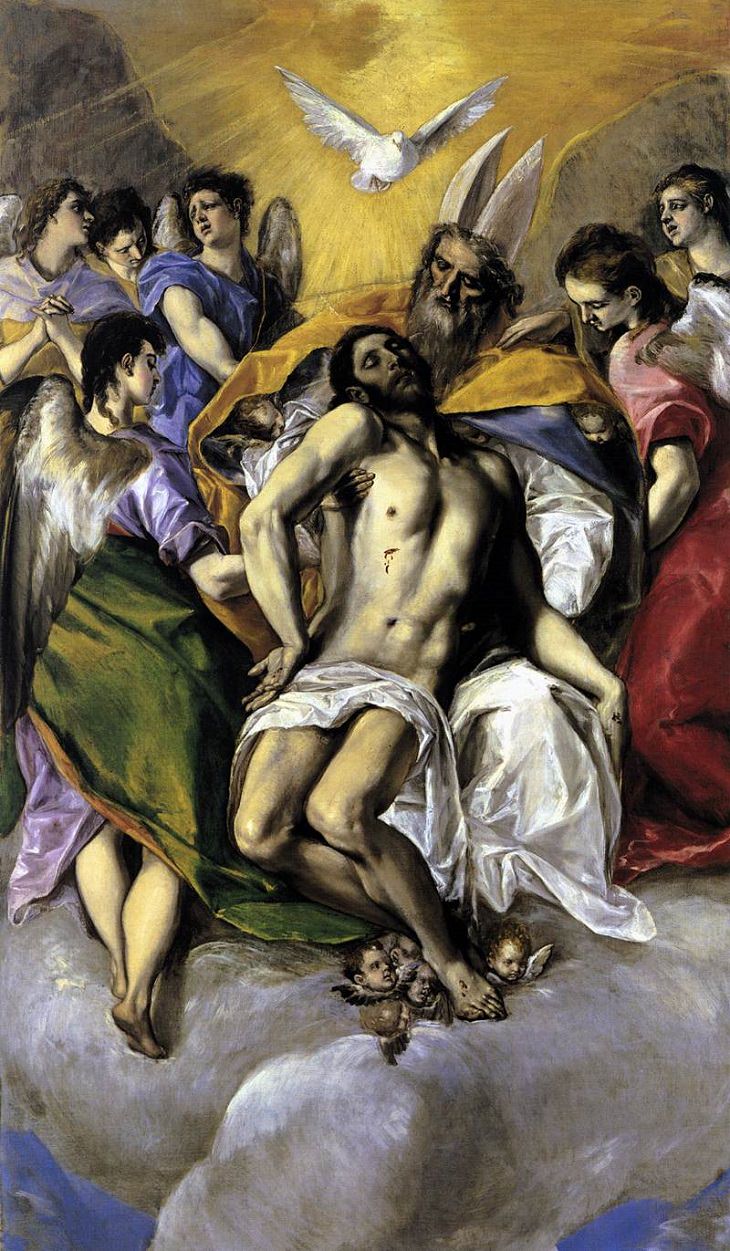
Spanish Title: La Trinidad
Year: 1577-1579
This painting shows early glimpses of El Greco’s pictorial genius marked by his brilliant use of color and continuity. This masterpiece brought El Greco great fame in Toledo, and was revered by the next generation of talented artists, including Édouard Manet.
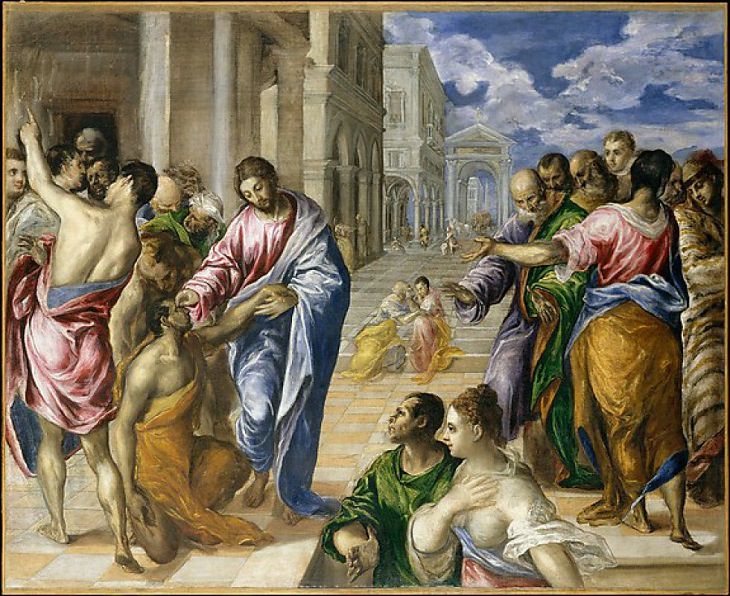
Spanish Title: La Curación del Ciego
Year: 1570
This piece of work was created by El Greco before he had moved to Spain. Painted in the Venetian Renaissance style, this masterpiece recalls the Gospel account of Christ healing a blind man by anointing his eyes. This subject was popular at the time as the curing of blindness was symbolic of revelation of the true faith. This painting is considered to be one the finest work of El Greco’s early career.
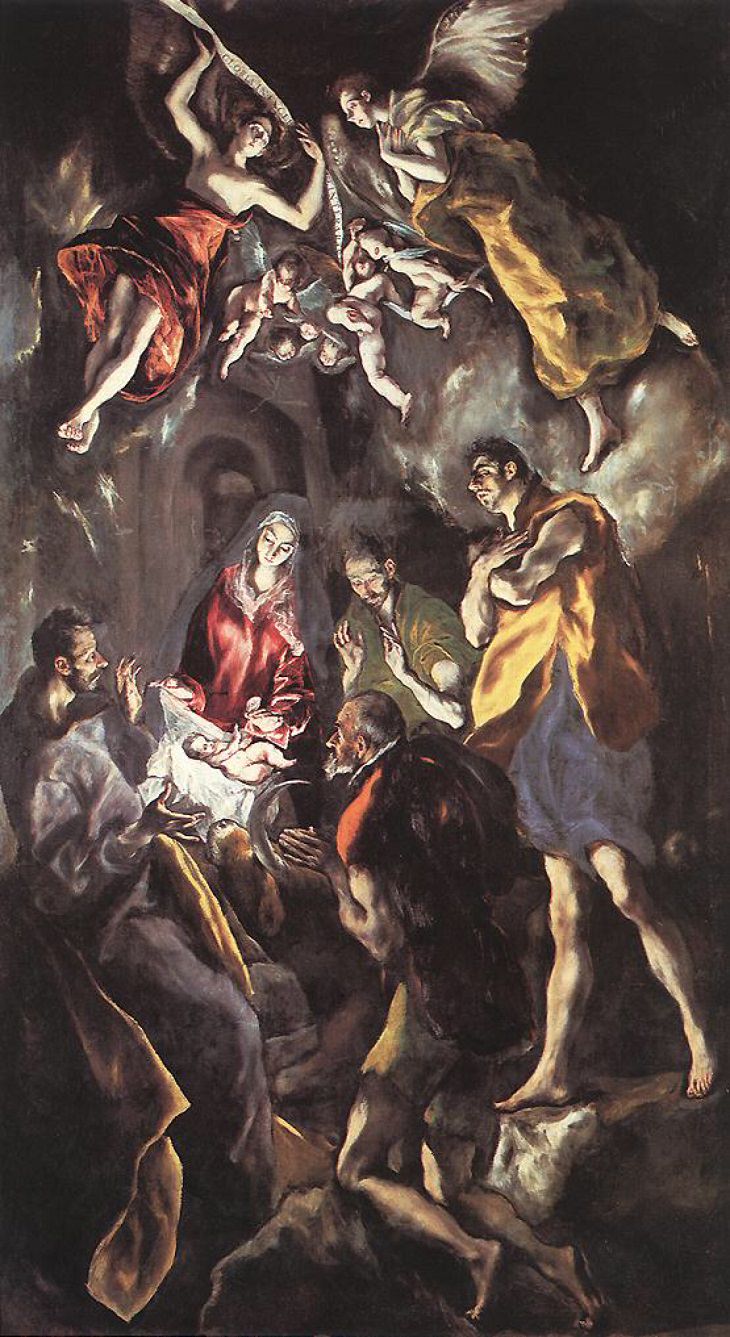
Spanish Title: La Adoración de los Pastores
Year: 1612-14
This painting shows shepherds and angels celebrating the miracle of the newly born Jesus. El Greco brilliantly uses strange poses, rhythmic dance like motions, and dissonant color to create a sense of wonder for the viewer. It also displays the extreme distortion of body which El Greco used a lot in his last works. It’s thought that El Greco was working on this painting right up until his death in April 1614.
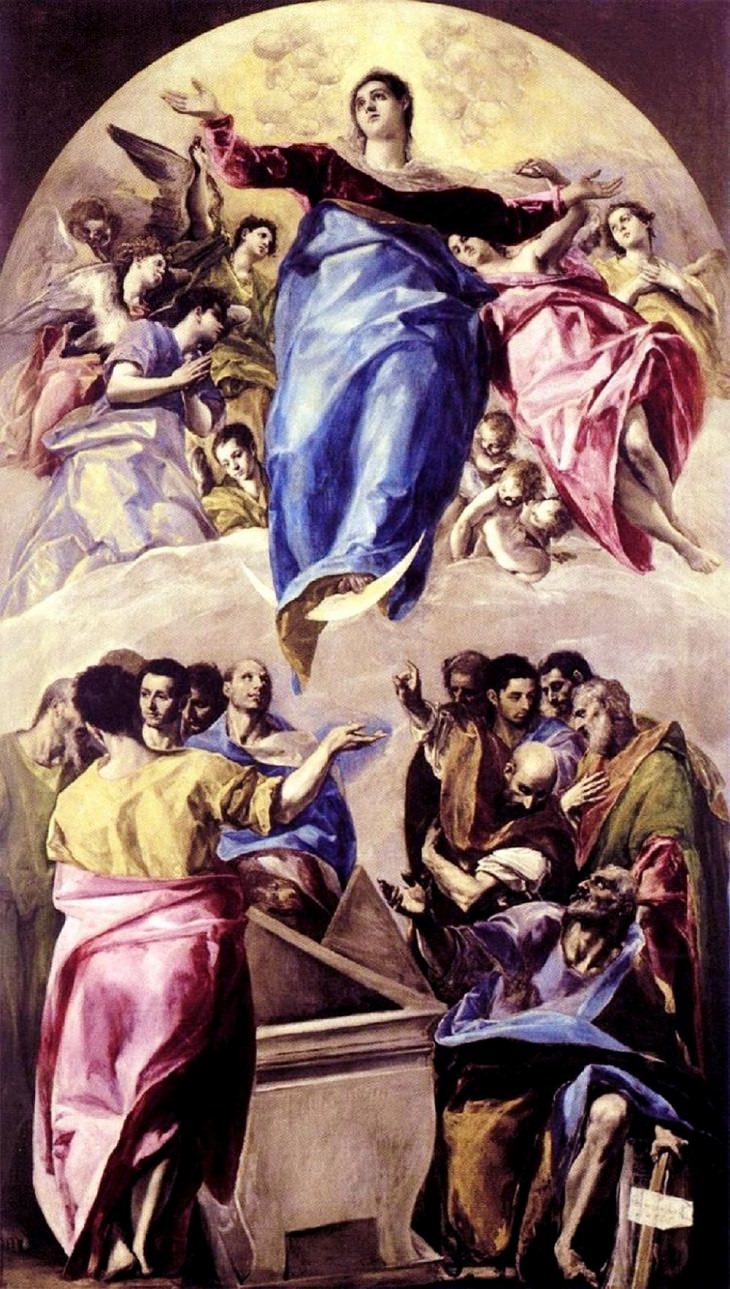
Spanish Title: Asunción de la Virgen
Year: 1577-79
This huge painting was painted for the high altar in the church of Santo Domingo el Antiguo in Toledo. Though painted using the Venetian technique, El Greco used the intensity of colors and manipulations of contrasts that he would soon become known for. This extraordinary painting marked a new period in his life, revealing his true talent.
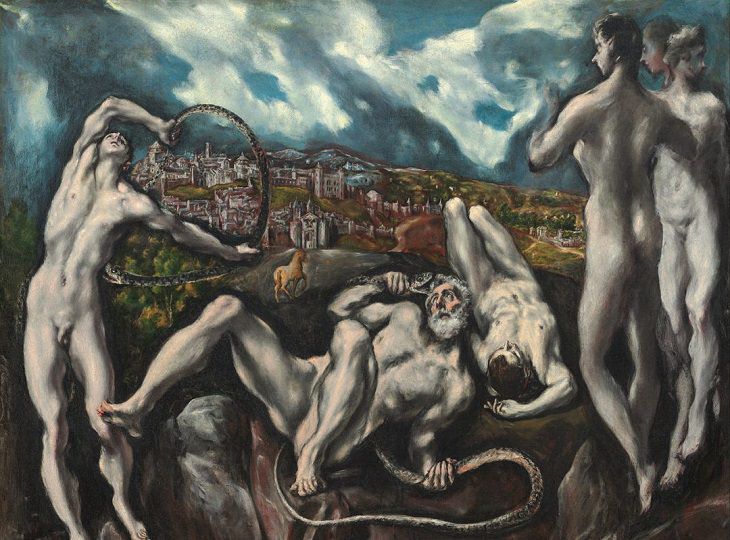
Spanish Title: Laocoonte
Year: 1610-14
This is a painting which depicts the deaths of Laocoön, the trojan priest of Poseidon, and his two sons Antiphantes and Thymbraeus. According to the myth, Laocoön warned his fellow countrymen about the Trojan Horse and, as a result, him and his sons were strangled by giant sea serpents as punishment. This painting has a deep impact on modern painting.
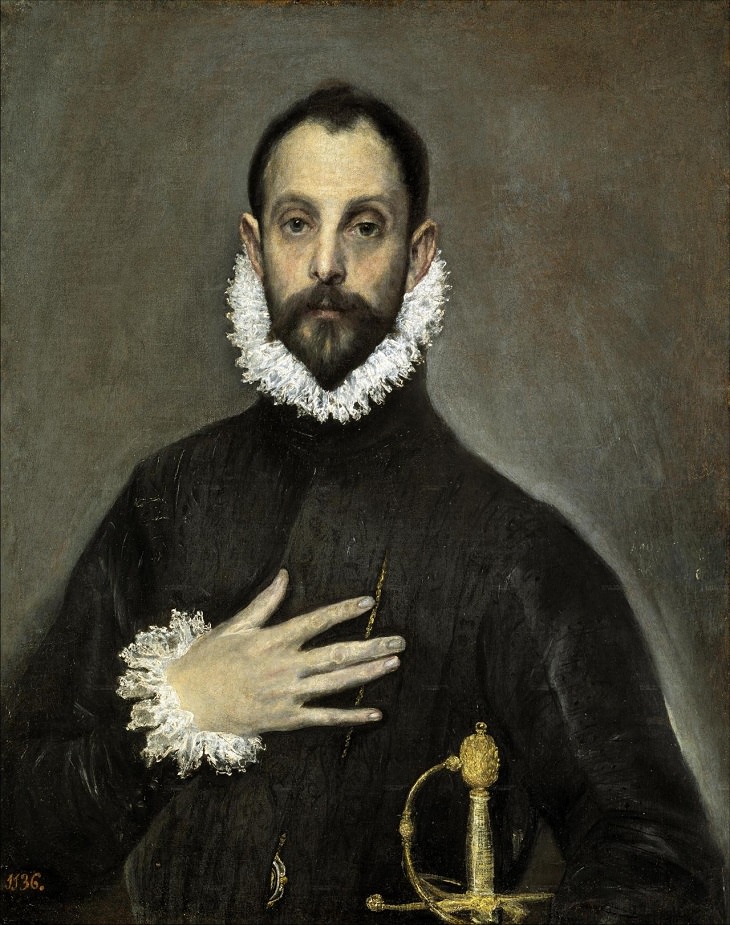
Spanish Title: El caballero de la Mano en el Pecho
Year: C. 1580
Though more known for his religious paintings, El Greco was an excellent portraitist. He was well known for not only elegantly recording the features of his subjects, but also for being able to convey their character on canvas. This portrait of a knight with his hand on his chest while leaning on his sword is part of a series of portraits of unknown gentlemen. This is his most famous portraiture work.
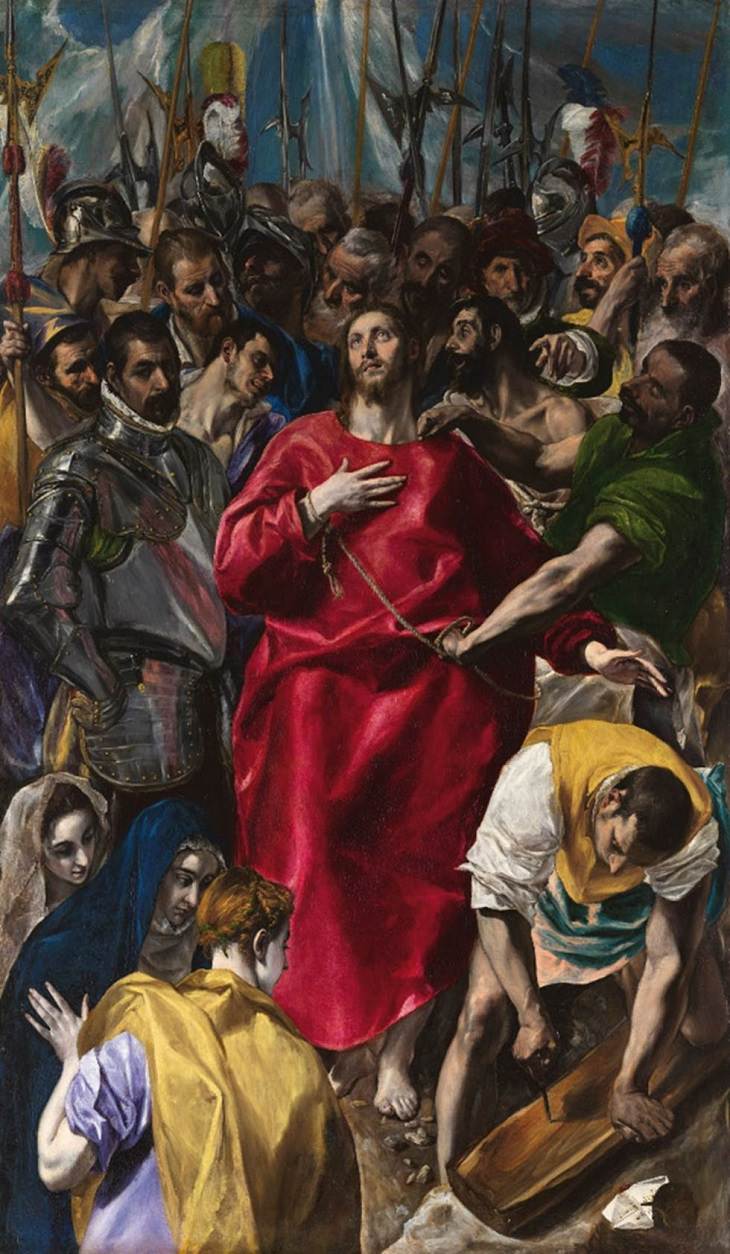
Spanish Title: El Expolio
Year: 1577-79
This masterpiece depicts the disrobing of Christ before he was crucified. Here El Greco uses space elimination and the superposition of heads row upon row to suggest that a crowd has gathered. This painting is noted for El Greco’s ability to capture Christ’s oppression by his cruel tormentors.
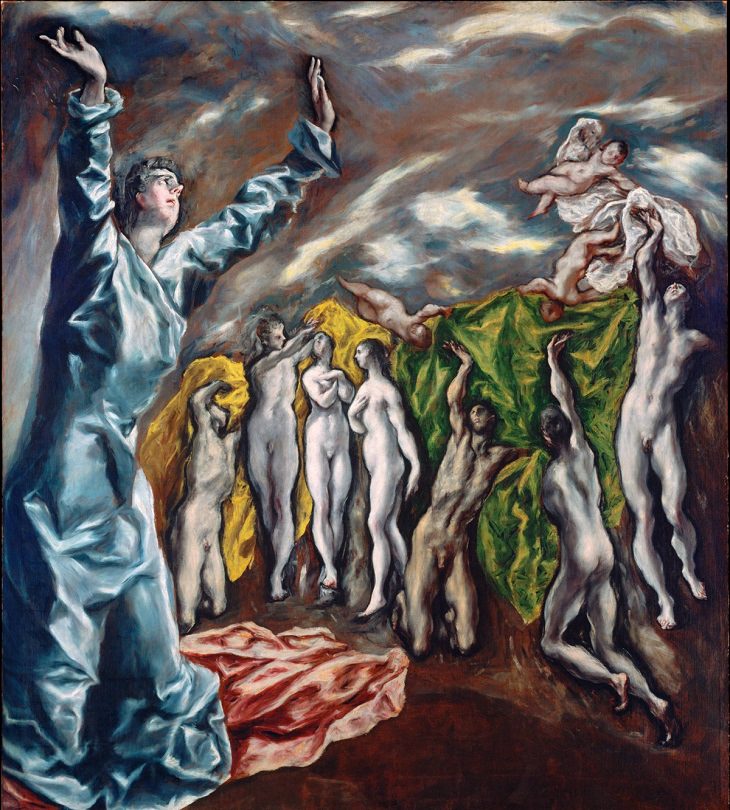
Spanish Title - Visión del Apocalipsis
Year: 1608-14
This is one of El Greco’s most famous later works. It depicts a passage from the Book of Revelation of the New Testament where the fifth seal is being opened and the souls of martyrs are crying out to God for deliverance. Many art critics believe that Pablo Picasso drew inspiration from this painting when he painted “Les Demoiselles d’Avignon,” often considered to be the first cubist painting.

Spanish Title: Vista de Toledo
Year: 1596-1600
During this time, landscape paintings were rare in Spanish art, and this particular painting is one of only three surviving landscapes by El Greco. The View of Toledo is well known for its enigmatic symbolism and for the brilliantly executed contrast between the dark skies above and the growing green below. Alongside Van Gogh’s “The Starry Night,” this is one of the most famous depictions of the sky in Western art.
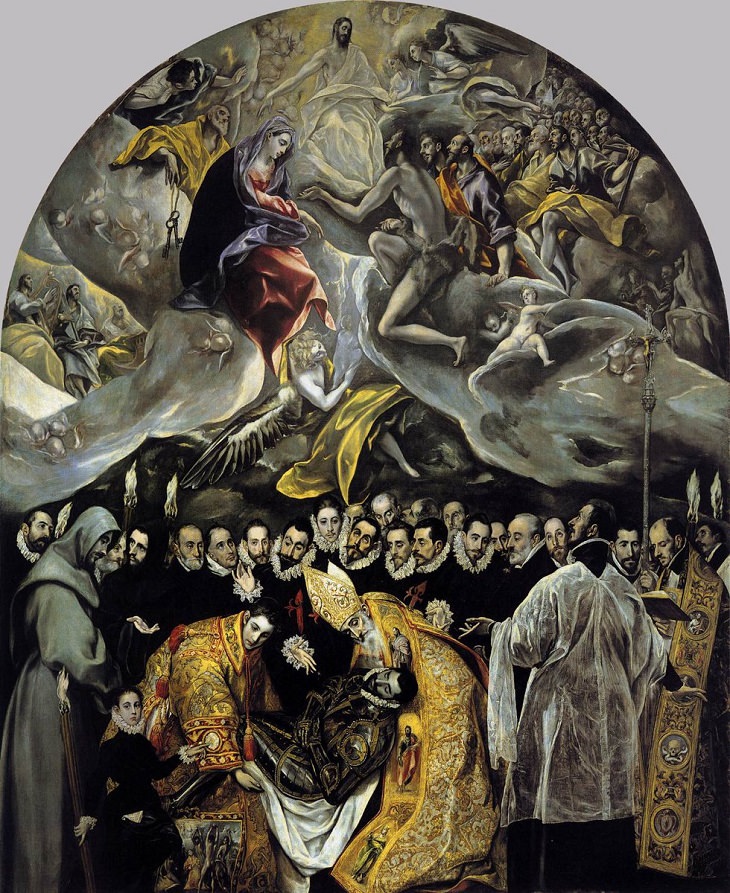
Spanish Title: El entierro del conde de Orgaz
Year: 1586-88
This painting depicts a popular legend which states that Saints Augustine and Stephen descended from heaven in order to assist in the burial of Don Gonzalo Ruíz, a native of Toledo known for philanthropy and pietry, and who after his death, became known as the Count of Orgaz. The lower section of the painting depicts the miraculous burial, while the above shows the spiritual world waiting to receive the pious man in heaven. As this work is a great example of Mannerism, contains an impressive array of portraits, and depicts a visionary experience, it’s seen by art critics as the coming together of all attributes of El Greco’s genius. This is the most famous painting by El Greco.
Source: learnodo-newtonic